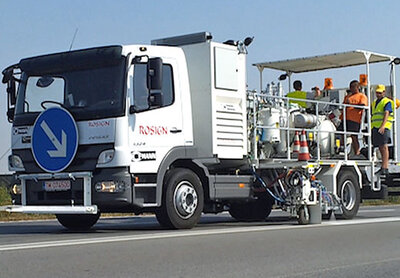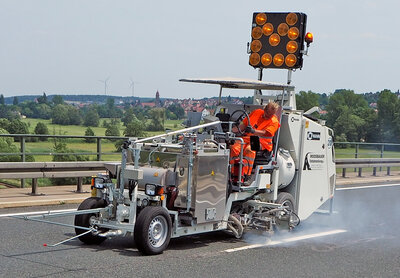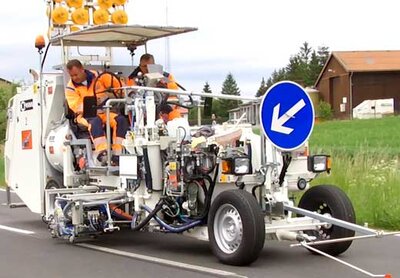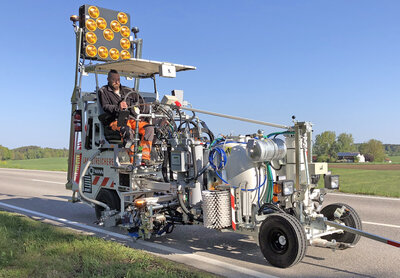Thermoplastic Road Markings - most important facts at a glance:
Thermoplastics melt or soften above a certain temperature range. Thanks to their durability, they are ideal for road markings. A distinction is made here between prefabricated road markings, application by spraying and via extruder/screed box. Thermoplastic road markings applied by spraying and extruder/screed box are applied by road marking machines. Thermoplastic road markings can be individually optimised by adding reflective glass beads or grip material.
What are Thermoplastic Road Markings?
Thermoplastics are plastics that become mouldable above a certain temperature range. By means of heating, the change of aggregate state can usually be repeated or reversed as often as required. This is where thermoplastics differ from other plastics such as thermosets, which, once cured, are no longer malleable.
Some thermoplastics soften under heat (amorphous thermoplastics), while others melt (semi-crystalline thermoplastics). In the past, thermoplastics were also known as "sprayable compounds" and "extrudable/layed compounds".
Thermoplastic Road Markings
The special chemical properties of thermoplastics make them ideal for road markings. They have therefore been used for road markings for about 70 years. The thermoplastics used for road markings melt at a temperature that is usually not reached by strong solar radiation. This ensures that the markings adhere to the ground for a long time. Due to their weather resistance and durability, thermoplastic road markings are preferred worldwide.
Fields of Application
Thermoplastic road markings are not only applied on motorways and country roads, but also on cycle paths, car parks and playgrounds. Due to their weather-resistant properties, the use of thermoplastics in sports halls or other indoor areas makes little sense. As thermoplastics are heated up considerably for application, a heat-resistant substrate is also required, which is usually not available in sports halls, for example.
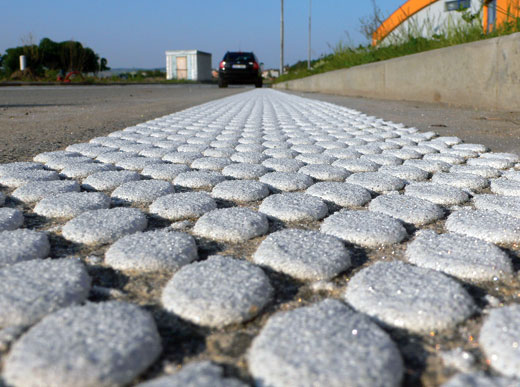
Types of Thermoplastics
Thermoplastic road markings are also available in a prefabricated form. These are, for example, individual warning or safety instructions that can be applied directly to the surface after heating. As the appearance of the warning signs is already prefabricated, they are usually made of amorphous thermoplastics. Usually only a gas burner is required for softening. However, such prefabricated road markings are only suitable for smaller marking projects with few markings, as the application effort is relatively high.
For more complex projects, such as kilometre-long roadway lines, prefabricated thermoplastic road markings are not sufficient. Here the use of high-performance marking machines is required. These have different application methods, which should be carefully selected depending on the project.
One of these application methods is the use of thermoplastic materials. Specially designed marking machines heat the thermoplastics and apply them to the substrate at the desired distances and shapes while driving. These methods are called "sprayable thermoplastics" or "thick layer plastics" because the liquid thermoplastic (semi-crystalline) is sprayed onto the substrate by the marking machine or laid on the substrate by means of an extruder and screed box.
The reflective properties of thermoplastic road markings can be further improved by the optional addition of glass beads. In addition, skid resistance agents mixed into the sprayable or thick layer compound optimise the road profile.
Application Techniques
Thermoplastics can be applied to the substrate using various techniques. Depending on the application technique, plaine line markings, "dots", drop-shaped patterns and profile patterns can be implemented. Marking machines that apply thermoplastic road markings achieve line thicknesses of up to 15 mm (depending on the equipment).
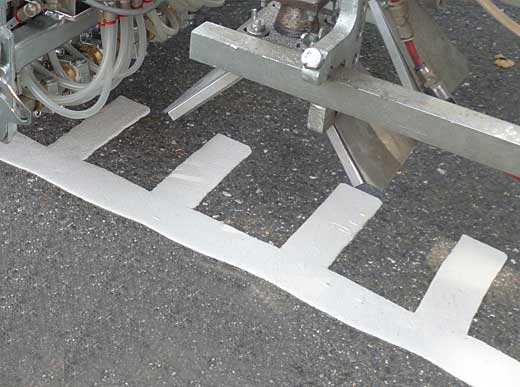
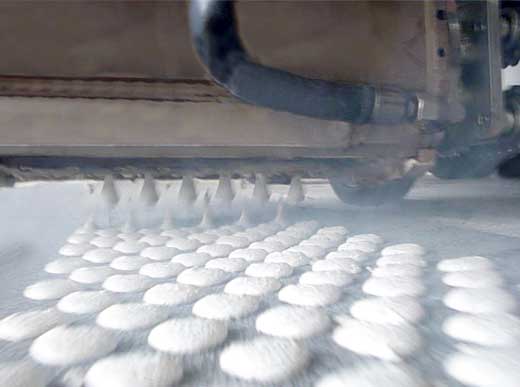
Thermoplastic Road Markings by HOFMANN
HOFMANN offers thermoplastic road markings for various purposes. With our marking machines, full markings (smooth line), profile markings (Kam- and Longflex, chessboard, lettering) as well as defined agglomerate markings can be applied. The distances between the "Dots" and the size of "Dot" can be adjusted by means of different hole cylinders.
Our marking machines are designed to reach the temperature required for thermoplastics even at low ambient temperatures. The material does not cool down until it exits to the road surface.
At the usual high driving speeds of up to 15km/h (depending on equipment), marking projects can be implemented promptly and reliably with HOFMANN marking machines.
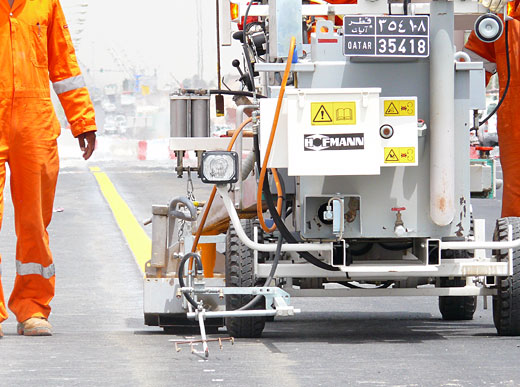
Consultation Request
We at HOFMANN know exactly which application methods and marking machines are suitable for your next marking project. Send us a consulting request and benefit from our more than 60 years of experience in the field of road marking.
Send us an inquiry today so that we can contact you as soon as possible!

